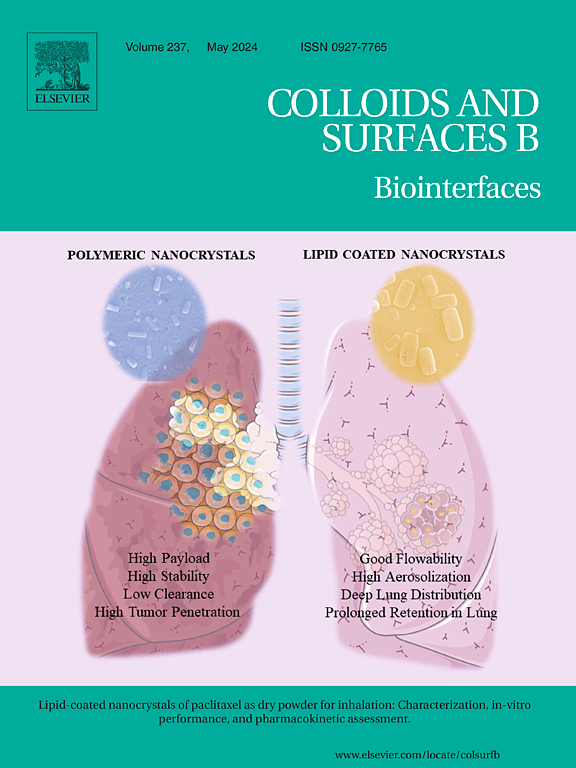Strategies to enhance the hydrolytic activity of Escherichia coli BL21 penicillin G acylase based on heterologous expression and targeted mutagenesis
IF 5.4
2区 医学
Q1 BIOPHYSICS
引用次数: 0
Abstract
Penicillin G acylase (PGA) serves as a critical biocatalyst for the hydrolysis of penicillin G, yielding 6-aminopenicillanic acid, a vital precursor for β-lactam semi-synthetic antibiotics. The catalytic efficiency of PGA, however, remains suboptimal in native Escherichia coli strains. To improve this, E. coli BL21 was engineered as a microbial cell factory via heterologous expression and site-directed mutagenesis to enhance PGA activity. The heterologous pga gene from Providencia rettgeri was integrated into E. coli BL21 (DE3) for the biosynthesis of PGA, achieving a PGA activity of 253 ± 2 U/mL after 16 hours of fermentation. The N167 site underwent mutation, producing the sites N167A and N167I. Plasmids carrying these mutations were introduced into E. coli BL21(DE3), and the enzymatic activities were recorded as 293 ± 3 U/mL for the N167A mutant and 238 ± 2 U/mL for the N167I mutant. This study not only introduces a novel approach to enhancing PGA activity but also illustrates the potential for catalytic optimization through targeted modifications of the enzyme's active site.
基于异源表达和定向诱变提高大肠杆菌 BL21 青霉素 G酰化酶水解活性的策略。
青霉素 G酰化酶(PGA)是水解青霉素 G 的关键生物催化剂,可产生 6-氨基青霉烷酸,这是β-内酰胺半合成抗生素的重要前体。然而,在本地大肠杆菌菌株中,PGA 的催化效率仍不理想。为了改善这一状况,我们通过异源表达和定点突变将大肠杆菌 BL21 改造成微生物细胞工厂,以提高 PGA 的活性。将来自 Providencia rettgeri 的异源 pga 基因整合到大肠杆菌 BL21 (DE3) 中,用于 PGA 的生物合成,发酵 16 小时后,PGA 活性达到 253 ± 2 U/mL。N167 位点发生突变,产生了 N167A 和 N167I 位点。将携带这些突变位点的质粒导入大肠杆菌 BL21(DE3),记录到 N167A 突变体的酶活性为 293 ± 3 U/mL,N167I 突变体的酶活性为 238 ± 2 U/mL。这项研究不仅介绍了一种提高 PGA 活性的新方法,而且还说明了通过对酶的活性位点进行靶向修饰来优化催化的潜力。
本文章由计算机程序翻译,如有差异,请以英文原文为准。
求助全文
约1分钟内获得全文
求助全文
来源期刊

Colloids and Surfaces B: Biointerfaces
生物-材料科学:生物材料
CiteScore
11.10
自引率
3.40%
发文量
730
审稿时长
42 days
期刊介绍:
Colloids and Surfaces B: Biointerfaces is an international journal devoted to fundamental and applied research on colloid and interfacial phenomena in relation to systems of biological origin, having particular relevance to the medical, pharmaceutical, biotechnological, food and cosmetic fields.
Submissions that: (1) deal solely with biological phenomena and do not describe the physico-chemical or colloid-chemical background and/or mechanism of the phenomena, and (2) deal solely with colloid/interfacial phenomena and do not have appropriate biological content or relevance, are outside the scope of the journal and will not be considered for publication.
The journal publishes regular research papers, reviews, short communications and invited perspective articles, called BioInterface Perspectives. The BioInterface Perspective provide researchers the opportunity to review their own work, as well as provide insight into the work of others that inspired and influenced the author. Regular articles should have a maximum total length of 6,000 words. In addition, a (combined) maximum of 8 normal-sized figures and/or tables is allowed (so for instance 3 tables and 5 figures). For multiple-panel figures each set of two panels equates to one figure. Short communications should not exceed half of the above. It is required to give on the article cover page a short statistical summary of the article listing the total number of words and tables/figures.
 求助内容:
求助内容: 应助结果提醒方式:
应助结果提醒方式:


